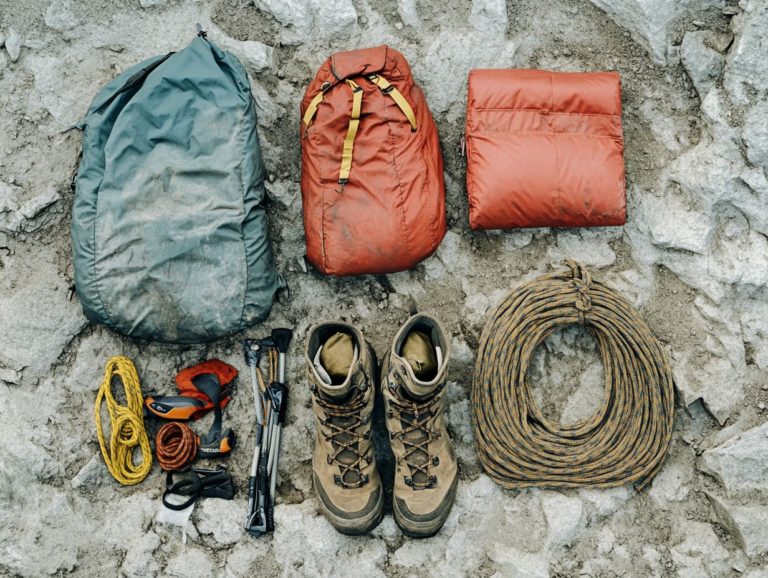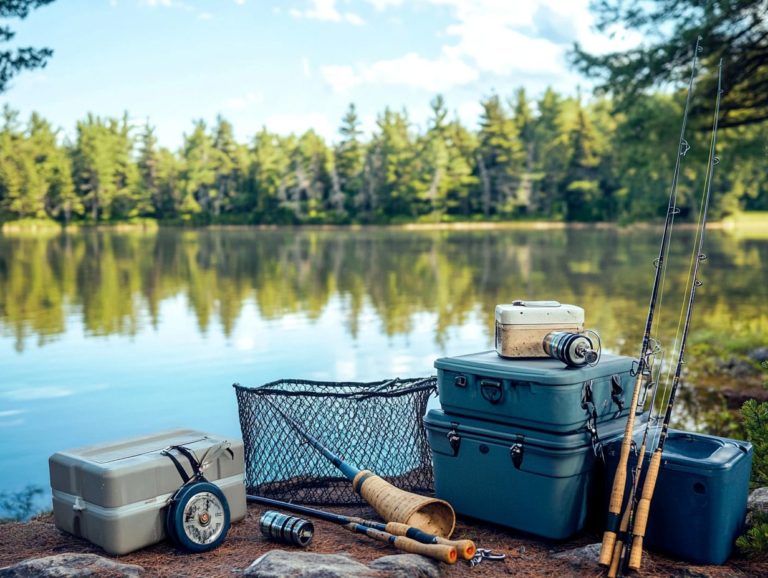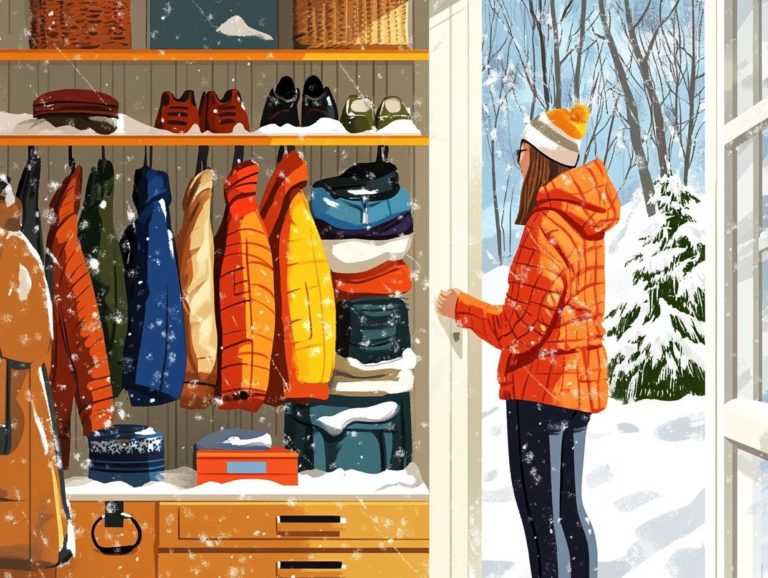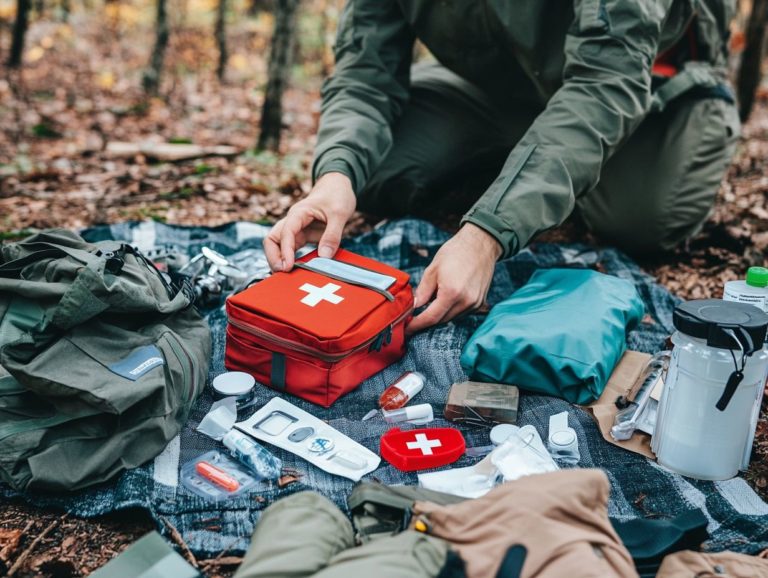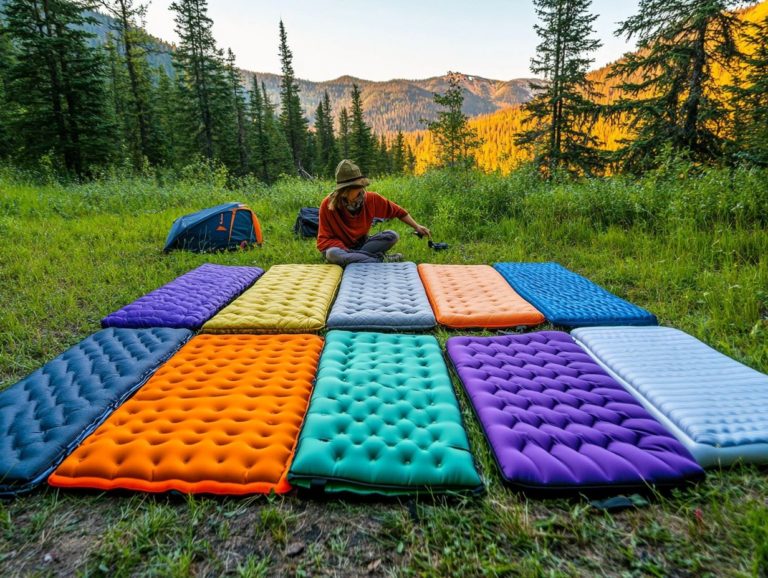What to Know About Outdoor Gear Recycling Programs?
Outdoor enthusiasts often find themselves with a mountain of gear over time. But what do you do when that gear is no longer needed?
The significance of outdoor gear recycling is higher than ever as we confront the environmental impact of gear waste. This article explores the types of gear that can be recycled, how to engage with recycling programs, and the many benefits of recycling.
It will also explore alternatives like upcycling and donating gear. Embrace the opportunity to make sustainable choices for our planet!
Contents
- Key Takeaways:
- The Importance of Outdoor Gear Recycling
- What Can Be Recycled?
- How to Participate in Recycling Programs
- Benefits of Recycling Outdoor Gear
- Alternatives to Recycling
- Frequently Asked Questions
- What to Know About Outdoor Gear Recycling Programs?
- What types of outdoor gear can be recycled?
- Where can I find outdoor gear recycling programs?
- Do I need to clean my gear before donating it?
- What happens to my gear after I donate it to a recycling program?
- Why should I participate in outdoor gear recycling programs?
Key Takeaways:
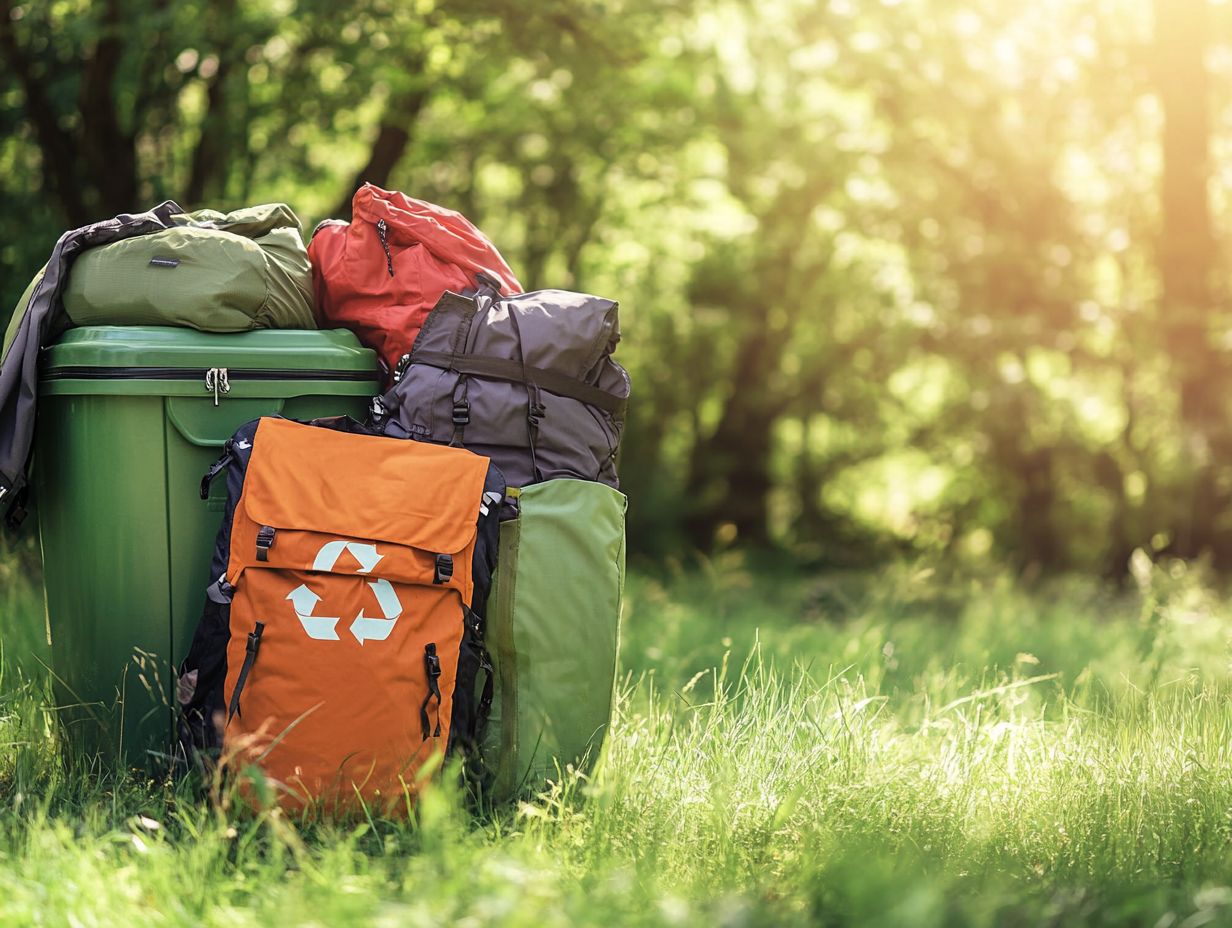
- Outdoor gear recycling programs help reduce the environmental impact of gear waste and promote sustainable practices.
- Various types of gear, such as clothing, tents, and backpacks, can be recycled through these programs.
- To participate in a recycling program, follow simple steps like cleaning and preparing your gear before dropping it off at designated locations.
The Importance of Outdoor Gear Recycling
Outdoor gear recycling plays a vital role in fostering sustainability while tackling urgent environmental challenges. By reducing waste, you help minimize the environmental footprint tied to the production and disposal of outdoor products.
With influential brands like Patagonia at the forefront, the importance of responsible manufacturing, sustainable materials, and renewable energy is clearer than ever. Recycling programs raise consumer awareness, encouraging you to embrace conscious consumerism and support a circular economy, which means reusing products to create less waste.
Environmental Impact of Gear Waste
The environmental impact of gear waste is significant, leading to increased pollution and the depletion of natural resources. When outdoor gear is discarded, it often ends up in landfills, worsening its environmental footprint.
Isn t it alarming that around 600 million pounds of outdoor gear are estimated to end up in landfills each year? This contributes to the growing waste crisis. This accumulation can contaminate our soil and water while heightening greenhouse gas emissions as materials break down.
By championing recycling programs, companies can significantly mitigate these impacts. Brands like Patagonia are leading the charge, demonstrating their commitment to sustainability through initiatives that promote recycling, effectively reducing waste and conserving valuable resources.
These programs guide consumer behavior toward more responsible practices, making a meaningful impact in the effort to protect our environment for future generations.
What Can Be Recycled?
Knowing what can be recycled, especially recycled materials, is crucial for ensuring effective participation in recycling programs. This is vital for outdoor gear made from recyclable materials like recycled nylon, recycled polyester, organic cotton, and hemp.
By understanding these materials, you can make informed choices that positively impact the environment.
Types of Gear Accepted in Recycling Programs
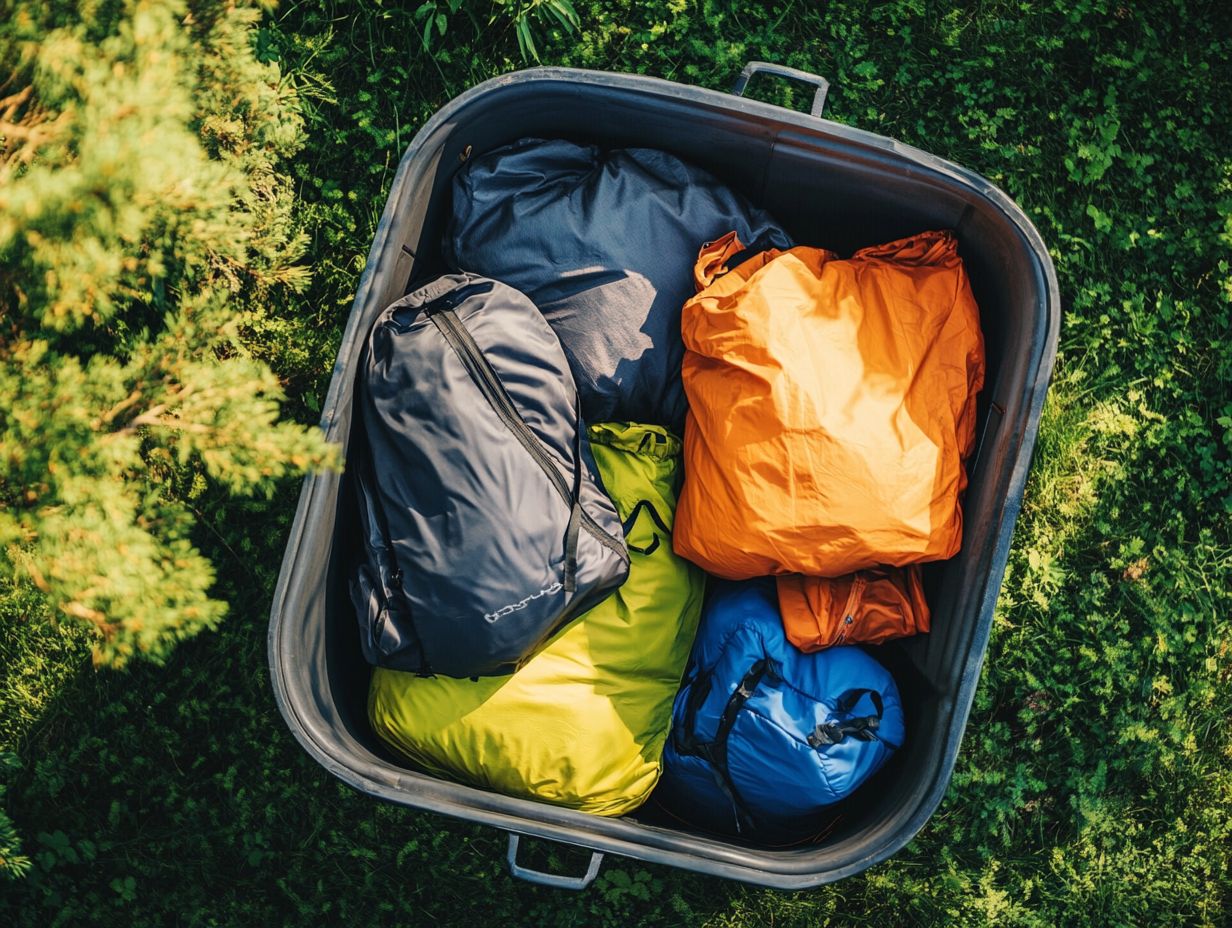
Many recycling programs accept a diverse range of outdoor gear, from climbing ropes to old tents, backpacks, and even worn clothes. This diversity ensures that various materials can be repurposed and reused, extending their lifecycle.
For example, climbing ropes can be transformed into stylish accessories like dog leashes or bracelets. Worn-out tents often become practical items such as tarps or bags. Your old backpacks might be reimagined into components for other gear or fashionable upcycled pieces.
Notably, brands like Patagonia are leading the way in promoting gear recycling, allowing customers to return their used items for innovative repurposing.
Their Worn Wear program exemplifies how outdoor enthusiasts can actively contribute to sustainability, fostering a culture of repair and reuse within the outdoor community.
Join the movement! Get involved with a recycling program today!
How to Participate in Recycling Programs
Engaging in recycling programs for outdoor gear is a seamless endeavor that gives you the power to contribute meaningfully to sustainability. Many organizations, such as Patagonia, offer clear instructions for recycling and provide ample opportunities for donating your gear.
This way, you can make a positive impact while ensuring your equipment finds a second life.
Steps to Recycling Your Gear
To recycle your outdoor gear effectively, begin by assessing the condition of your items. Next, research local recycling programs or initiatives supported by brands such as Patagonia.
Evaluate your gear carefully. You don t want to send perfectly usable items to a recycling facility when they could be donated or sold.
Take a close look at items like worn-out sleeping bags, old tents, or frayed harnesses, and accurately determine their condition. Once you’ve completed this evaluation, explore local recycling protocols.
Many outdoor retailers offer take-back programs or collaborate with specific charities to repurpose equipment. For instance, organizations might accept gently-used backpacks or water bottles, ensuring they find a new life rather than ending up in a landfill. Understanding these options fosters sustainability and positively impacts local communities.
Benefits of Recycling Outdoor Gear
Recycling outdoor gear offers many benefits! It promotes sustainability through responsible manufacturing and reduces waste. It also strengthens the cause of environmental advocacy.
Companies like Patagonia exemplify this commitment by championing ethical production methods, setting a standard for others to follow. Embracing these practices benefits the planet and enriches your outdoor experience.
Sustainable Practices and Conservation Efforts
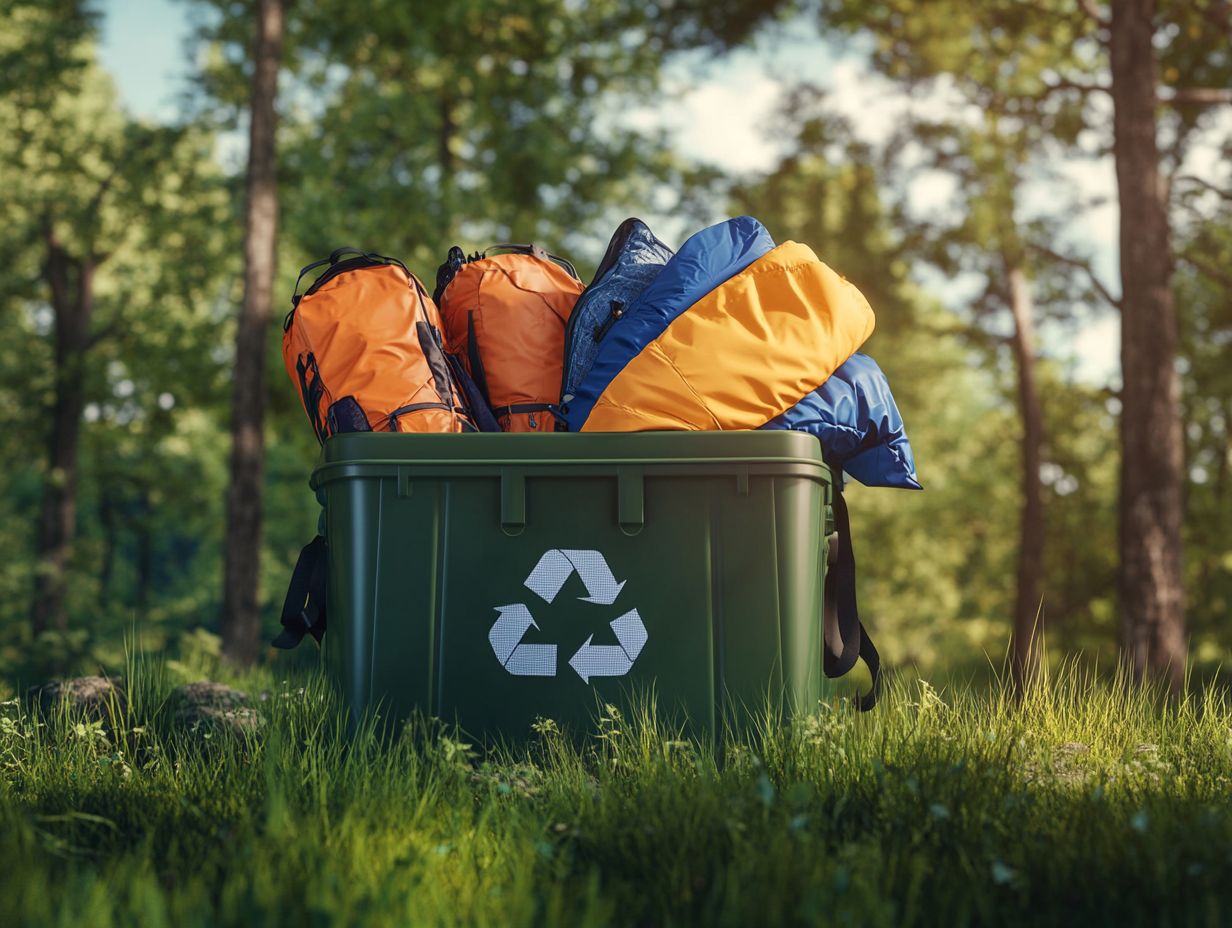
Sustainable practices in recycling outdoor gear play a vital role in conservation efforts, with organizations and brands like Patagonia leading the charge in initiatives that emphasize environmental stewardship and the responsible use of resources.
When you participate in programs that encourage returning used products, you re not just helping to reduce waste in landfills; you re helping create a system where used items are reused or recycled rather than thrown away. These initiatives often involve refurbishing gear and donating it to those in need, cultivating a sense of community and shared responsibility for the environment.
Many outdoor brands are also stepping up to support reforestation projects and advocate for the protection of natural habitats, understanding that healthy ecosystems are essential for outdoor activities. By embracing these efforts, you contribute to minimizing the environmental impact of outdoor pursuits, all while enjoying the beauty of nature in a more sustainable way.
Alternatives to Recycling
Recycling represents a vital aspect of sustainable practices, but don’t forget to consider exciting alternatives like upcycling and donating your gear. These options not only give you the power to prolong the life of your outdoor equipment but also enable you to support local community organizations.
Engaging in these conscious consumer choices enhances your impact, fostering a more sustainable future for everyone.
Upcycling and Donating Gear
Upcycling and donating your gear are not just responsible choices; they’re impactful ways to support sustainability while uplifting community organizations. Many brands, such as Patagonia, champion these initiatives and urge you to creatively repurpose your outdoor equipment.
Across the globe, various programs show a commitment to sustainable practices. Organizations like Freecycle and Swap.com make it easy for you to exchange gently used items, allowing you to pass on your unwanted gear while uncovering hidden gems from others.
Local charities like Goodwill and Salvation Army regularly welcome outdoor equipment donations. They transform what might have been seen as waste into valuable resources for underserved communities. These practices do more than just extend the life of products and reduce landfill contributions; they encourage smart shopping choices, prompting you to think critically about your purchasing decisions and their environmental impact.
Frequently Asked Questions
What to Know About Outdoor Gear Recycling Programs?
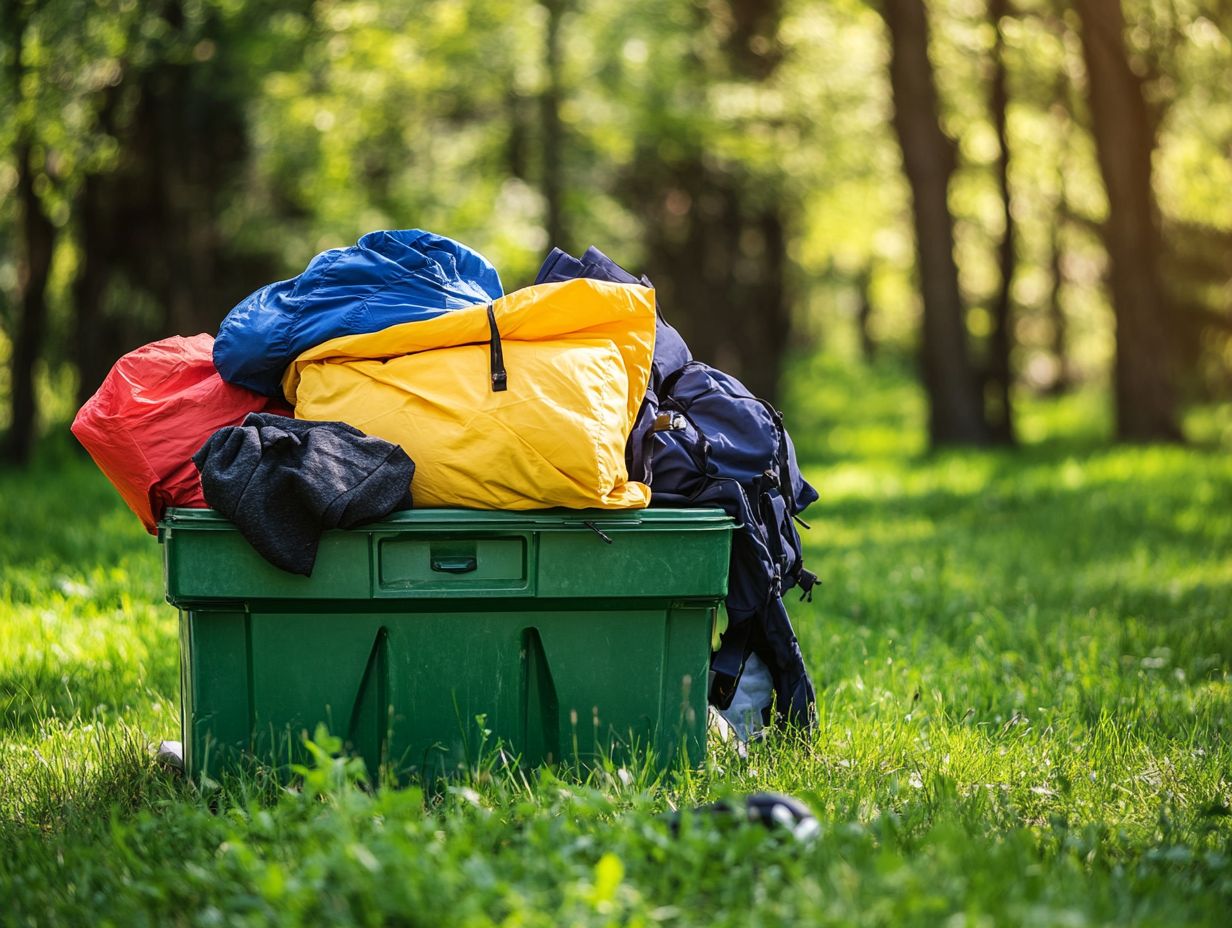
Outdoor gear recycling programs aim to reduce waste and promote sustainability in the outdoor industry. These programs typically collect used or unwanted outdoor gear and find ways to repurpose or recycle it instead of sending it to landfills.
What types of outdoor gear can be recycled?
Outdoor gear recycling programs accept a wide range of items, including clothing, backpacks, camping equipment, climbing gear, and even electronics like GPS devices and action cameras. Many environmental organizations offer such programs, but it’s best to check with the specific program you are interested in to see which items they accept.
Where can I find outdoor gear recycling programs?
Many outdoor retailers and brands, like Patagonia and The North Face, have their own recycling programs. It s worth checking with the company you purchased your gear from. You can also find non-profit organizations and online platforms, such as Yerdle and Freecycle, that facilitate gear donations and recycling.
Do I need to clean my gear before donating it?
Yes, it’s important to clean your gear before donating it to a recycling program. Doing so ensures that the gear is in good condition for repurposing or recycling and shows respect for the people who will handle your gear in the recycling process.
What happens to my gear after I donate it to a recycling program?
The process varies depending on the program. Some may repair and resell the gear, while others may recycle it into new products or donate it to those in need. Make sure to inquire about the specific process of the program you are donating to.
Why should I participate in outdoor gear recycling programs?
Join the movement! Recycling your gear not only helps the planet but also saves resources. Plus, some programs even reward you with store credit, making it a win-win for both you and the environment.
Take action today! Participate in a recycling program or donate your gear to help make a difference.

